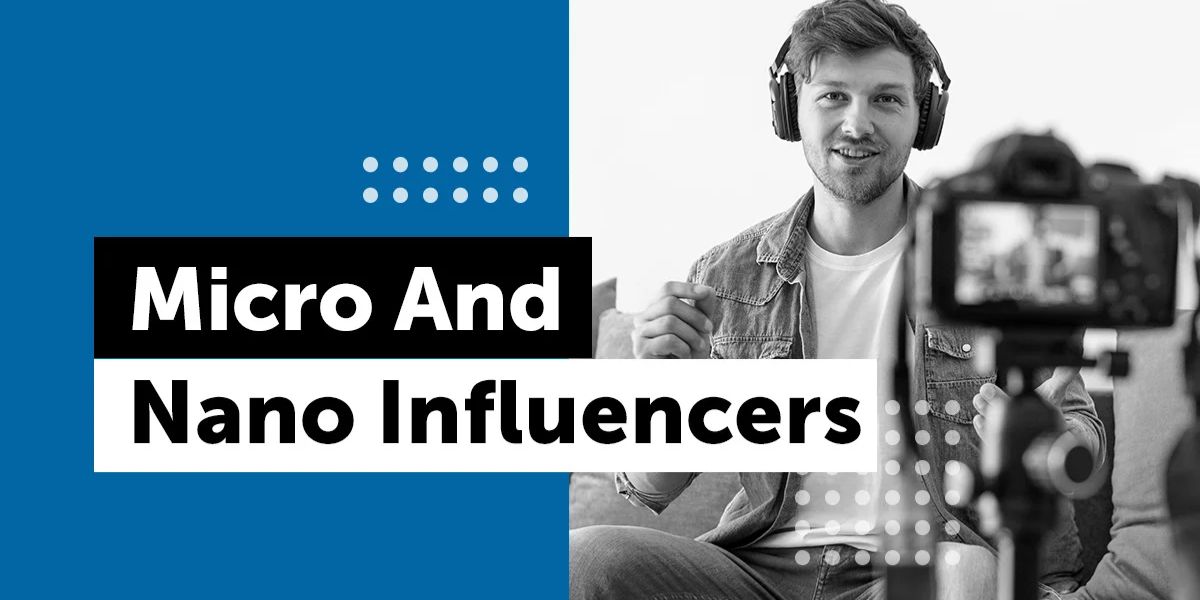Micro-influencer marketing: Influencer collaborations are among the biggest ways to reach out to their audiences. Still, the trend is shifting toward micro- and nano-influencers with much smaller and more engaged communities. These people may not have the 1 to 100,000 followers that can reach millions like a celebrity, but they often possess something even more valuable: trust and authenticity.
People are getting wary of the classic advertisement approach and celebrity endorsement. Instead, they head toward people who seem like commoners; opinions related to them are found to be more real. Micro- and nano-influencers connect with their audience, creating an extremely engaged community that responds positively to the respective person’s recommendation. This change has made the brands realize that bigger does not always mean more favorable influencer marketing.
This blog will discuss why smaller audiences can be more impactful, the benefits for brands, real-world examples, and strategies for effective collaboration with micro- and nano-influencers.
Defining Micro and Nano-Influencers
The discussion about benefits starts with understanding who micro- and nano-influencers are and recognizing how they differ from conventional influencers.
- Micro-Influencers: These content creators have 10K and 100K followers who serve specific niches. Micro- and nano-influencers specialize in content creation in specific fields including fashion, fitness, travel, and technology. Their audience members demonstrate strong loyalty because they value the influencer’s professional guidance and advice.
- Nano-Influencers: Nano-influencers attract online followers whose numbers remain below 10,000 people. Most nano-influencers maintain social media audiences between 1,000 to 10,000. This person maintains close ties with local communities through whom they built their social media following. Influencers who maintain intimate relationships with their followers achieve stronger audience participation ratios.
The regular interaction between micro- and nano-influencers with their audience creates active communities and quick response protocols to fan comments. Because micro- and nano-influencers connect with their audience personally their brand suggestions feel like genuine word-of-mouth recommendations rather than traditional paid promotions giving them stronger influence potential independent of their actual number of followers.
Why Smaller Audiences are More Impactful?
Many brands assume that the greater the audience, the better the outcome. Not always. Here’s why smaller influencers often have an edge:
- Greater Engagement Rate: A research study reveals that the higher the follower count, the greater the tendency for the engagement rate to decrease. Micro-and nano-influencers face much higher engagement rates than macro-influencers and celebrities. That means the viewers are going to engage with their posts more often.
- Stronger Community Connections: Large influencers with millions of followers differ from micro and nano-influencers in that they create stronger connections within the community. They facilitate two-way conversations, comment on messages, and even form personal relationships with their audience.
- Better audience targeting: More targeted smaller influencers usually work within a niche area, allowing brands to pinpoint a highly specific audience more easily. For example, a beauty brand might find a skincare-focused micro-influencer rather than just partnering with some general lifestyle influencer.
- Greater Trust and Authenticity: Micro- and nano-influencers are viewed as real people rather than celebrities or marketers. Since their endorsement feels more like a personal recommendation, followers trust and act upon it more easily.
By putting engagement and authenticity overreach, micro- and nano-influencers aid brands in reaching meaningful connections with consumers, hence higher conversion rates and long-term brand loyalty.
Cost-Effectiveness for Brands
Cost is one of the significant advantages of using micro-and nano-influencers. Compared with mega-influencers who charge thousands or even millions of dollars to have a post on a campaign, micro- and nano-influencers are much cheaper and are great for engaging small, medium-sized, or large businesses.
- Lower Collaboration Costs: Most micro-influencers can charge between $100 and $1,000 per post, while the nano-influencers may offer to accept free products for promotion. This means they are excellent for startups and small enterprises with relatively limited marketing budgets.
- Greater Return on Investment: As micro and nano-influencers generate better engagements and conversion, brands typically earn better ROI through influencer campaigns than those involving mainstream influencers. By signing one celebrity to a single post, businesses cannot do the same by partnering with multiple micro-influencers, reaching a wider audience for sure.
- More Flexible Partnerships: Many small-time influencers are also very flexible and easy to work with, so experimenting with different marketing and promotion ideas, like long-term brand partnerships, affiliate marketing, giveaways, and product seeding, is not a pricey affair.
Ultimately, micro-and nano-influencer marketing brings the maximum mileage for the buck to the campaign for the brand.
Authenticity and Trust
Trust is the base of influencer marketing, and here is where micro- and nano-influencers stand tall. Unlike celebrities, who just endorse products because of money, micro- and nano-influencers endorse brands they love and use.
- More Personal Interactions: Micro- and nano-influencers spend their time replying to followers, answering questions, and giving honest opinions. That level of engagement builds trust and credibility.
- Authentic Recommendations: Since they have fewer sponsorship opportunities than larger influencers, they are very selective about the brands they work with. Therefore, their followers trust that they only endorse products they believe in.
- Authentic content: They look more organic and less like an advertisement. Be it an Instagram story a TikTok video or a blog post, their promotions almost melt with their style of regular content.
This trust produces stronger consumer relationships and increased brand loyalty, directly leading to higher sales.
Higher Conversion Rates
Micro and nano-influencers tend to have higher conversion rates than larger influencers because of their close-knit communities and strong credibility.
- Better Engagement Leads to More Conversions: Their audience is highly engaged, meaning followers are likelier to click on links, use discount codes, and make purchases based on their recommendations.
- Less “Ad Fatigue”: Consumers are constantly bombarded by ads from big influencers and celebrities. On the other hand, micro and nano-influencers are less aggressive with product promotion; thus, their content feels less commercial and more real.
- More Influence on Buying Decisions: Research has proved that 82% of customers are more prone to buy something a micro-influencer recommends than a celebrity because their advice will feel like recommendations from a friend rather than some paid endorsement.
For brands aiming for conversions, collaborations with smaller influencers are a proven way to drive actual results.
Real-World Examples
Many brands have used micro- and nano-influencers to grow their businesses.
- Daniel Wellington: The watch brand built its success through micro-influencer partnerships. They gifted watches to small influencers in exchange for social media posts, generating massive brand awareness and sales.
- Glossier: This beauty brand relies heavily on everyday consumers and nano-influencers to spread the word about its products. Their user-generated content strategy has built a loyal customer base.
- HelloFresh is partnering with micro-influencers focused on food to advertise its meal kit subscription services. This way, the influencers tell their audiences where HelloFresh fits in their lives.
These examples show how smaller influencers can powerfully impact brand growth and consumer trust.
How to Collaborate with Micro and Nano-Influencers
1. Identify the Right Influencers
It is crucial to find the right influencers to execute a successful campaign. Platforms like Upfluence, AspireIQ, or Heepsy help discover influencers in your niche. Do not solely rely on the number of followers but consider engagement rates, quality of content, and audience demographics.
Ensure the personal brand of the influencer resonates with your company values. Also, checking previous collaborations can tell if they are authentic and work effectively in promoting brands like yours. A well-matched influencer ensures better audience trust and campaign results.
2. Build Genuine Relationships
Instead of pitching to influencers, first build a relationship. Follow them on social media, engage with their content, and leave meaningful comments. This way, the influencer will recognize your brand, making them more likely to collaborate.
When reaching out, personalize your message instead of using generic emails. Explain why you appreciate their work and how your brand aligns with their content. A good starting relationship fosters more authentic and long-lasting relationships that benefit the individuals involved.
3. Offer Value to Influencers
The micro- and nano-influencers are selective with the brands they endorse. So, offering value is important. Some will accept free products, but most will want fair compensation for their effort. Offer monetary payments, affiliate commissions, exclusive discounts, or early product access to make the collaboration worthwhile.
Give them creative freedom; trust their expertise in engaging their audience. A well-structured partnership that prioritizes both brand goals and influencer interests leads to better, more organic marketing outcomes.
4. Track Performance and Optimize
Campaign success helps to improve the next collaboration. Utilize UTM links, discount codes, and social media analytics to measure engagement, clicks, and conversions. Keep a close eye on KPIs such as reach, likes, comments, shares, and sales.
Compare various influencers’ performance to identify who performs better for your brand. According to these insights, your influencer marketing strategy will be optimized for content styles, collaboration terms, or influencers. This will be data-driven and ensure your brand gets the best return on investment.
Conclusion | Micro-influencer marketing
The playing field for the influencer marketing industry is redeveloped through micro and nano-influencers with higher engagement levels, trust levels, and economies of scale, making them highly reliable for brands of all forms and sizes. For the sake of actual relationships in preference to huge figures, marketers now make campaigns worth reading and reflecting on. For micro and nano-sized businesses or corporations, finding the power to influence means conversion percentages increase as the loyalty associated with a given brand grows. Authenticity is the future of influencer marketing, and smaller influencers are shaping that future.





